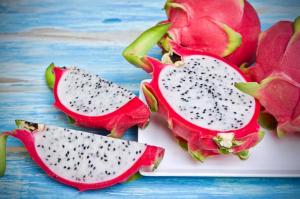Why Does Tomato Plant Leaves Curl Up
Tomato plants are among the most popular crops grown in both commercial and backyard gardens. But sometimes, tomato plant leaves can curl up, and it can be an indication of a problem. In this article, we will explore the reasons why tomato plant leaves curl up and what you can do to fix the problem.
1. Environmental Stress
Environmental stress is a common cause of tomato plant leaves curling up. Environmental stress factors include high temperatures, low humidity, lack of water, and strong winds. When tomato plants are exposed to high temperatures, for example, their leaves tend to curl up, and the plant can wilt. Similarly, strong winds can also lead to dehydrated plants, which manifest in the form of curling leaves.
To prevent environmental stress, it is recommended that you provide your tomato plant with adequate water and maintain a consistent watering schedule. You can also plant them in an area with good drainage or use mulch to retain moisture. Shield the plants from strong winds if possible, and consider using shade cloths during extremely hot weather. You can also move your plants indoors during extreme weather conditions.
2. Diseases and Pests
Diseases and pests also cause tomato plant leaves to curl up. These include pests such as aphids, spider mites, whiteflies, and thrips. Insects like these suck the fluids out of the leaves, weakening the plant and causing leaves to curl, yellow and dry out.
Another factor is tomato yellow leaf curl virus (TYLCV), a viral disease that causes the leaves to curl up and turn yellow. This virus is usually transmitted by whiteflies and can be identified early by yellowing and curling of tomato plant leaves. To prevent this virus, use pest and disease-resistant tomatoes, use insecticides, and avoid planting in infested soil.
3. Nutrient Imbalance
A nutrient imbalance can also lead to curled up tomato plant leaves. Lack of nutrients such as nitrogen, magnesium, and calcium can cause the leaves to curl up and turn yellow. On the other hand, excess levels of potassium can cause curled leaves, especially the older ones at the bottom of the plant.
The best way to avoid nutrient imbalances is to use a balanced fertilizer with the right amounts of macro and micronutrients for tomatoes. You can also amend the soil with organic matter like compost, which enhances soil fertility and retains moisture. Be sure to test your soil to identify nutrient deficiencies and amend it accordingly.
4. Genetic Traits
Certain tomato plant varieties have curling leaves that are genetically determined. The most common variety of tomato plant with curled leaves is the "curly leaf" tomato plant. Sometimes, commercial growers intentionally choose plants with curled leaves, as they are resistant to certain diseases and pests.
If you notice curled leaves on your tomato plants, it may be challenging to determine the cause without a proper diagnosis. However, by examining the leaves and considering environmental factors, diseases, pests, and nutrient imbalances, you can identify the cause and take the necessary steps to fix the problem.
In conclusion, tomato plant leaves curl up because of many reasons, including environmental stress, diseases and pests, nutrient imbalance, and genetic traits. As a gardener, it's essential to monitor your tomato plant's health and address any issues promptly. Mindful care and attention to your tomato plants will result in healthy and robust yields.

 how many times do yo...
how many times do yo... how many planted tre...
how many planted tre... how many pine trees ...
how many pine trees ... how many pecan trees...
how many pecan trees... how many plants comp...
how many plants comp... how many plants can ...
how many plants can ... how many plants and ...
how many plants and ... how many pepper plan...
how many pepper plan...





























